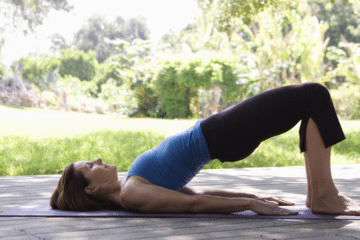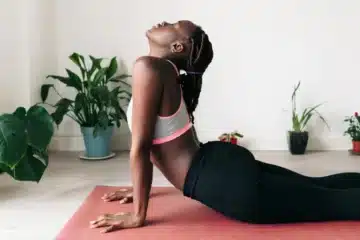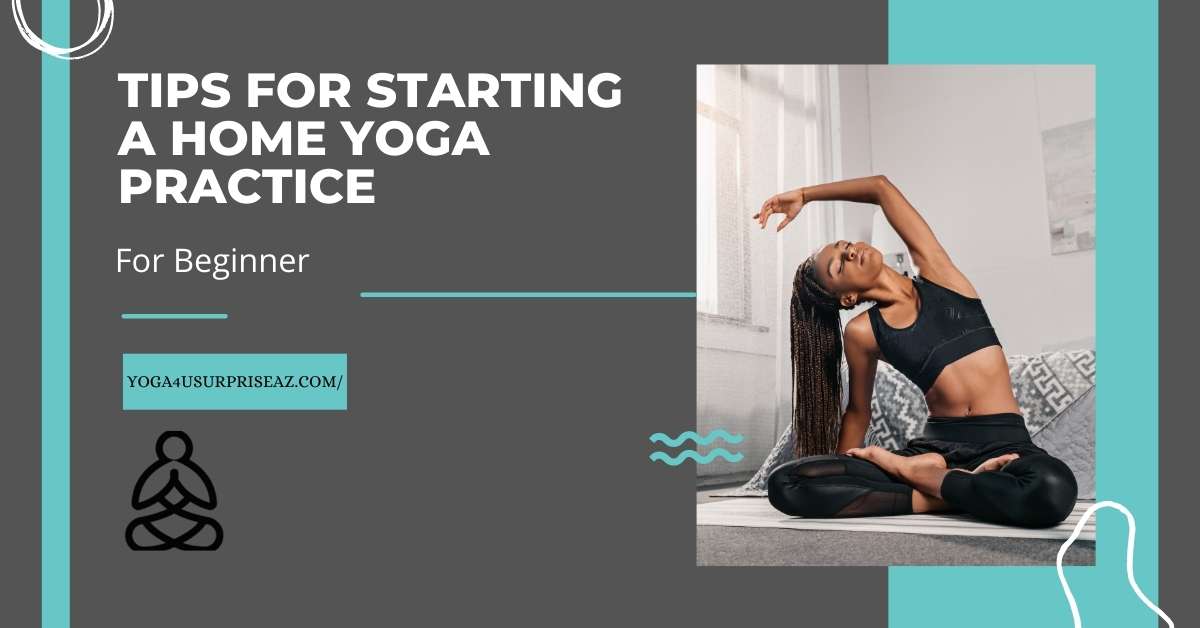To create a tranquil yoga space at home, choose a quiet, clutter-free area and decorate it with calming colors and natural elements. Add comfortable yoga mats, cushions, and essential oils to enhance the peaceful atmosphere.
Creating a dedicated space for yoga practice can help you cultivate a sense of calm and relaxation, promoting mindfulness and well-being. By following simple steps to set up your tranquil yoga space, you can ensure a serene environment for your practice, allowing you to fully immerse yourself in the benefits of yoga and meditation.
This sacred space will provide a sanctuary for your mind and body, ultimately enhancing your overall well-being and sense of inner peace. With the right elements and intention, your home can become a haven for rejuvenating yoga practice.

Credit: www.wired.com
Choosing The Perfect Location
When it comes to creating a tranquil yoga space at home, choosing the perfect location is crucial. Your yoga space should be a serene and calming environment, separate from the hustle and bustle of everyday life. The right location can enhance the overall experience of practicing yoga, promoting relaxation and mindfulness.
Considerations For The Space
- Opt for a quiet and peaceful area in your home, away from noise and distractions.
- Ensure the space is spacious enough to accommodate your yoga mat and allows for free movement.
- Preferably, select a location with minimal foot traffic to maintain a sense of privacy.
Natural Light And Ventilation
Natural light can play a significant role in creating a harmonious yoga space. Look for a room with ample windows or consider setting up your yoga area near a well-lit window. This will not only provide a sense of openness but also connect you with the outdoors, promoting a positive energy flow during your practice.
Ventilation is also vital for maintaining a fresh and peaceful ambiance. Choose a space with good air circulation to ensure a constant supply of fresh air during your yoga sessions.
By carefully considering these factors, you can select the perfect location for your tranquil at-home yoga space, fostering a serene atmosphere for your practice sessions.
Creating A Calm Atmosphere
Creating a calm atmosphere is essential for a tranquil yoga space at home. A serene environment can promote relaxation and peace during your practice. To set the right mood, consider factors such as color schemes, lighting, and decor. By prioritizing these elements, you can establish a soothing ambiance that supports your yoga and meditation sessions.
Selecting The Right Colors
When choosing the color palette for your yoga space, opt for cool, muted tones that evoke a sense of tranquility. Shades of soft blue, calming green, and gentle lavender can promote a serene atmosphere conducive to mindfulness. These hues can help facilitate a sense of peace and relaxation as you immerse yourself in your practice.
Using Soft Lighting
Soft, diffused lighting plays a significant role in creating a serene ambiance. Consider using warm, dim lighting sources such as lamps, candles, and string lights to avoid harsh, bright lights that may disrupt the calming atmosphere. By incorporating gentle illumination, you can encourage a sense of calm and aid in fostering a tranquil space for your yoga practice.
Selecting Essential Yoga Tools
Transform your home into a serene sanctuary for yoga with the right tools. Discover how to create a tranquil yoga space and select essential equipment for your practice.
Choosing The Right Mat
When it comes to creating a tranquil yoga space at home, one of the essential tools you’ll need is a yoga mat. Picking the right mat is crucial for optimal comfort and support during your practice. Here are some points to consider when choosing a yoga mat:
- Thickness: The thickness of the mat affects your stability and cushioning. Thicker mats provide more cushioning, making them ideal for beginners or those with joint issues. Thinner mats, on the other hand, offer a more solid and stable foundation for advanced yogis.
- Material: Yoga mats are available in various materials like rubber, PVC, and eco-friendly options like natural rubber or cork. Each material has its advantages, so choose one that aligns with your preferences.
- Grip: A mat with a good grip prevents slipping and ensures stability in your poses. Look for mats with non-slip surfaces or those designed with special textures to provide unmatched traction.
- Size: Consider the dimensions of the mat to find one that suits your unique needs. Standard sizes typically range from 68 to 72 inches in length and 24 to 26 inches in width.
Exploring Props And Accessories
In addition to a yoga mat, incorporating props and accessories into your practice can help enhance your experience and deepen your stretches. Here are a few essential accessories worth exploring:
- Yoga Blocks: These compact tools provide stability and support during challenging poses or for yogis with limited flexibility. They assist in achieving proper alignment and can be used to modify poses.
- Yoga Straps: A yoga strap is a versatile tool that aids in improving flexibility. It helps you reach deeper stretches by providing extra length and support.
- Bolsters: Bolsters are large cushions that offer support and relaxation during restorative or gentle yoga practices. They can be used to elevate different body parts and provide a comfortable surface for relaxation.
- Blankets: Yoga blankets are not only useful for staying warm during relaxation poses but also serve as extra padding for sensitive joints or as a prop for certain poses.
By wisely selecting essential yoga tools like a suitable mat and exploring the use of props and accessories, you can create a serene and effective yoga space in the comfort of your own home. These tools will enable you to focus on your practice and reap the countless benefits of yoga.
Incorporating Nature Elements
Elevate your home yoga space by incorporating nature elements such as plants, natural light, and calming colors. These elements can create a tranquil and calming environment for your practice, helping you to connect with nature and find inner peace.
Adding Indoor Plants
Creating a tranquil yoga space at home can greatly enhance your practice and promote a sense of calm and relaxation. One way to incorporate nature elements into your yoga space is by adding indoor plants. These green companions not only beautify your space but also help improve air quality and create a soothing atmosphere. Whether you have a large room or a small corner dedicated to your practice, there are several indoor plants that can thrive in different conditions. Consider the following options for adding some greenery to your yoga space:
- Snake Plant (Sansevieria): Known for its air-purifying properties, this low-maintenance plant can thrive in low-light environments and requires minimal watering.
- Peace Lily (Spathiphyllum): With its lush green leaves and white flowers, the peace lily adds a touch of elegance to any space. It prefers filtered light and regular watering.
- Rubber Plant (Ficus elastica): This hardy plant with its glossy leaves is an excellent choice for beginners. It thrives in medium to bright indirect light and requires moderate watering.
- Zamioculcas Zamiifolia (ZZ Plant): With its waxy green foliage, the ZZ plant can thrive in low-light conditions and requires infrequent watering, making it perfect for busy individuals.
- Spider Plant (Chlorophytum comosum): This adaptable plant is known for its spider-like leaves and ability to purify the air. It can tolerate various light conditions and requires moderate watering.
Using Natural Materials
In addition to incorporating indoor plants, using natural materials can enhance the organic feel of your yoga space. By opting for sustainable and eco-friendly materials, you not only create a visually appealing space but also contribute to a healthier environment. Consider the following options when selecting furniture, flooring, and accessories for your yoga space:
- Wood: Choose furniture made from sustainably sourced wood. Consider bamboo or reclaimed wood for an earth-friendly touch.
- Cork: Use cork flooring for its natural warmth and cushioning properties. It’s also a sustainable option as it comes from the bark of the cork oak tree.
- Organic Fabrics: Look for yoga mats, bolsters, and blankets made from organic cotton or linen. These materials are free from harmful chemicals and gentle on the skin.
- Hemp: Furniture upholstery, curtains, or wall hangings made from hemp not only add an earthy touch but also contribute to a more sustainable lifestyle.
- Natural Light: Maximize natural light by incorporating large windows or skylights. This not only adds to the calming ambiance but also reduces the need for artificial lighting.
By incorporating indoor plants and using natural materials in your yoga space, you can create a serene environment that brings you closer to nature and enhances your overall yoga experience. So, go ahead and bring the outdoors in for a more grounding and peaceful practice.
Personalizing Your Yoga Space
Transform your home into a peaceful yoga sanctuary by personalizing your practice space. Create a tranquil environment with calming colors, soothing scents, and minimal clutter. Incorporate soft lighting, comfortable props, and meaningful decor to enhance your yoga experience.
Displaying Inspirational Quotes
Displaying inspirational quotes in your yoga space can be a great way to create a positive and motivating atmosphere. These quotes can serve as reminders to stay present, cultivate mindfulness, and embrace self-care. Whether you prefer hand-written quotes on colorful cards, or printable quotes framed on the wall, surrounding yourself with uplifting messages can enhance your yoga practice. Choose quotes that resonate with you personally and reflect the intentions you bring to your mat. Remember, the aim is to create a space that inspires and uplifts you, so don’t be afraid to get creative and experiment with different quotes and styles.
Including Meaningful Symbols
Another way to personalize your yoga space is by including meaningful symbols that hold significance to you and your practice. Symbols can represent different aspects of spirituality, inner peace, and balance. They can be in the form of statues, figurines, paintings, or even objects you’ve collected over time that hold a special meaning. The key is to choose symbols that resonate with you and bring a sense of tranquility to your space. You can also incorporate elements from nature, such as plants or seashells, to bring a natural and grounding energy to your yoga space. Experiment with different symbols and arrangements, and let your intuition guide you in creating a space that feels authentic and comforting to you.
Additional Tips For Personalizing Your Yoga Space
| Tips | Examples |
|---|---|
| Create a vision board | Use magazine cutouts or printed images that represent your goals, aspirations, and dreams. |
| Choose calming colors | Opt for soothing colors like pastels or earth tones that promote relaxation and peace. |
| Organize your props | Make sure your props, such as yoga mats, blocks, and bolsters, are neatly stored and easily accessible. |
| Bring in natural light | Position your yoga space near a window to invite natural light and fresh air into your practice. |
| Consider scent | Use essential oils, incense, or scented candles to create a soothing aroma in your yoga space. |
| Play calming music | Create a playlist of soft instrumental music or soothing sounds that enhance relaxation during your practice. |

Credit: www.calm.com

Credit: www.walmart.com
Frequently Asked Questions Of How To Create A Tranquil Yoga Space At Home
How Do You Make A Peaceful Yoga Room?
To create a peaceful yoga room, follow these steps: 1. Choose a calm and quiet location. 2. Decorate the space with soothing colors and natural elements. 3. Use soft lighting and play calming music. 4. Keep the room clutter-free and organized.
5. Set aside dedicated time for daily practice.
What Do I Need In My Yoga Space?
To create the perfect yoga space, you need a yoga mat, comfortable clothing, props like blocks and straps, soothing music or a calming atmosphere, and ample space for movement.
How To Create A Yoga Studio At Home?
To create a yoga studio at home, follow these steps: 1. Choose a quiet and clutter-free space for your practice. 2. Set up a yoga mat or rug for comfort and stability. 3. Gather props like blocks, straps, and bolsters for modifications and support.
4. Decorate the space with calming elements like plants, candles, and soothing colors. 5. Use online resources or apps for guided yoga classes and routines. Enjoy your yoga practice at home!
How Do I Make My House Smell Like A Yoga Studio?
To make your house smell like a yoga studio, burn scented candles or incense, and use essential oils like lavender or eucalyptus. Keep the space clean and decluttered, and consider investing in a diffuser. Practice deep breathing exercises to create a peaceful ambiance.
Conclusion
Creating a tranquil yoga space at home is a wonderful way to enhance your practice and find inner peace. By following these tips, you can transform any corner of your home into a soothing sanctuary that supports your physical and mental well-being.
Remember to prioritize simplicity, natural elements, and a clutter-free environment. With these simple steps, you’ll have a serene space where you can relax, unwind, and connect with your true self. Namaste.



